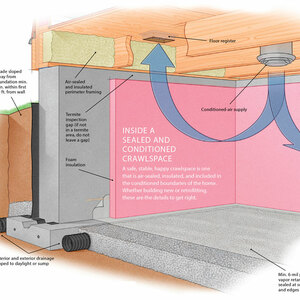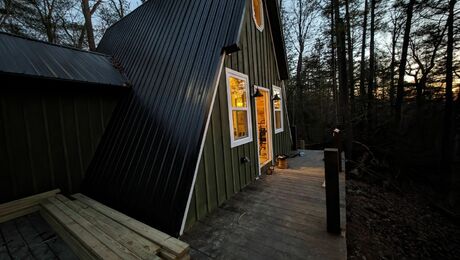
It’s a little early to start high-fiving, but there are at least a couple signs that longstanding approaches to mortgage underwriting and property appraisals, which have traditionally assigned no value to home energy performance, might eventually begin factoring energy performance into valuations.
One source of change in that direction is an addendum to the standard Fannie Mae Form 1004 used for residential appraisals. Issued by the Appraisal Institute, the addendum lists items that would eligible for consideration within the appraised value of a property, including insulation systems (their type, location, and R-value); water efficiency systems; daylighting features; appliance performance ratings; average utility costs; energy audit data; photovoltaic systems; LEED for Homes and National Green Building Standard certifications and scores; and government incentives that may have been applied to the purchase or installation of the property’s energy efficiency systems.
Another, more sweeping initiative, designed to reckon energy efficiency performance with mortgage underwriting, is the Sensible Accounting to Value Energy Act of 2011 (S.1737), introduced on October 19 by Senator Michael Bennet, Democrat of Colorado and Senator Johnny Isakson, Republican of Georgia. The SAVE Act, as it is known, would require that home energy costs be factored into the formula for determining a home’s overall value and the prospective homebuyer’s eligibility for a loan.
A HERS rating and mortgage underwriting
The preferred tool for estimating energy costs is Residential Energy Service Network’s Home Energy Rating System, although the law would allow other suitable third-party methods to be used (alternative methods must be approved by the Department of Housing and Urban Development, in consultation with the Department of Energy).
The Alliance to Save Energy – a coalition of industry, government, and consumer interests – points out that under the SAVE Act a seller whose home is rated as 30% more energy efficient than a comparably sized home built to barely meet the 2006 International Energy Conservation Code would see about $10,000 added to its appraised home value. And while this higher price would seem to push prospective buyers closer to their loan-eligibility limit, the energy efficiency of the house in this example, the ASE notes, could actually work in the buyers’ favor, since it would reduce the home’s projected annual energy costs by about $700. Under the SAVE Act, those projected energy savings would be among the debt-to-income factors used in determining whether prospective buyers qualify for a loan.
SAVE Act requirements would apply to loans backed by Fannie Mae, Freddie Mac, and the Federal Housing Administration.
Modeling the potential effects of the law
Endorsed by the Appraisal Institute, the U.S. Chamber of Commerce, the U.S. Green Building Council, and the Natural Resources Defense Council, the SAVE Act is touted as a potential driver of growth in retrofit and homebuilding sectors focused on energy efficiency. The American Council for an Energy-Efficient Economy, for example, estimates that, because the law would allow homeowners to recover the cost of energy efficiency improvements upon the sale of their homes, its enactment could create 83,000 jobs by 2020 and reduce energy costs for single-family homeowners by $1.1 billion annually.
When it comes to increasing the number of energy efficiency upgrades, ACEEE estimates don’t show huge market penetration overall – 0.01% in 2013 (about 8,600 home upgrades annually) and about 0.7% by 2020 (about 650,000 upgrades annually) – but enough to slowly nudge up employment numbers in the retrofit and homebuilding categories. The analysis assumes a 15% average energy savings per home and about $5,000 in renovation costs per project.

The Residential Energy Service Network’s Home Energy Rating System Index would be one of the approved metrics for use in energy-cost estimates required under the Sensible Accounting to Value Energy Act, proposed on October 19 by Senator Michael Bennet (D-CO) and cosponsored by Senator Johnny Isakson (R-GA).
























